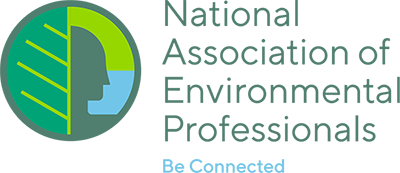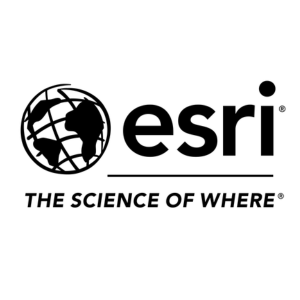|
Session A4
Resilience is the Future of Transportation Networks
T. Luke Young, Tatum Lau, & Kristin Davis
11:00 – 12:30 PM (PT) | 2:00 – 3:30 PM (ET)
| About the Presentation |
|
Few governments have applied an integrated approach to resilience and disaster risk reduction in the transportation sector. The creation of resilient transportation corridors and networks constitutes a paradigm shift in designing, building and maintaining systems that proactively address natural hazards and consider future climate change scenarios. The remarkable pivot from a reactive toward a proactive approach recognizes both the cost of inaction and the socio-economic benefits of resilience. This presentation highlights three projects addressing hazards and ecosystem challenges with their own unique solution. Seen together they present powerful combination of models for building a resilient transportation future:
- AECOM developed the SWIFT (Sustainable Ways to Integrate Future Transportation) tool to help Texas Department of Transportation explore holistic infrastructure and policy strategies that provide the greatest benefits to achieving their goals. SWIFT is an exploratory modelling tool based on data-driven, performance-based and scenario planning methodologies evaluate future uncertainties in land use, travel behavior, mobility policy, and emerging. Conventional models do not often consider the system's resilience to handle unexpected events. Acute disturbances such as major storms and flooding, are increasing in both severity and frequency. SWIFT enables agencies to take proactive approaches and understand to what extent their transportation systems perform under extreme duress and unique circumstances, and to prepare them to create effective contingency plans, and a safer environment for all residents.
- California State Route 37 (SR 37) is an important regional highway, connecting the northern California San Francisco Bay Area sub-regions. To balance the needs of traffic congestion relief, sea level rise and flooding adaptation, and ecological resilience, AECOM led a team that broke traditional barriers to collaborate outside of the box. An integrated corridor design was developed to address these issues through a collaborative process. Over a year-long series of meetings and workshops, MTC worked with an environmental technical working group of transportation planners, engineers, ecologists, regulatory agencies, environmental organizations, and others to ensure a multi-benefit cohesive resilient transportation system.
- The Ecuadorian National Road Network (NRN) has been conceived as a set of roads that integrate the country by connecting the most important population centers and facilitating the movement of strategic goods and services that contribute to the economic prosperity of the country. In presence of the occurrence of natural disasters, the main affected activities are the large economic sectors and population centers that are likely to be isolated especially due to flooding or other road blockages.
To address this challenge, AECOM developed a strategy to ensure that the NRN is robust enough to resist and adapt to the hazards to which it is exposed, providing continuity in the mobilization of goods and services offered to the main economic sectors, in addition to adopting focused a response for cities.
 Transportation Track, 1.5 AICP Credits Transportation Track, 1.5 AICP Credits
|
| About the Speakers |
|
 T. Luke Young T. Luke Young
Resilience + Climate Change Practice Lead
AECOM
T. Luke Young is the Environment Practice Lead for Resilience + Climate Change for the Americas. He directs project teams throughout the region that provide technical assistance, identify best practices and engage stakeholders to build local capacity while developing and delivering sustainability strategies, climate action plans, vulnerability assessments, resilience approaches and climate adapted infrastructure design solutions. He co-led an ambitious effort to develop a multi-sectoral Resilient Recovery plan for the national ReImagina initiative in Puerto Rico after the devastation wrought by hurricanes Irene and Maria. T. Luke was also the AECOM Project Manager for 100 Resilient Cities strategy development in 8 cities. Additionally, he led teams supporting cities in Mexico, Colombia and Ecuador to develop climate action plans and recommend inclusive mitigation and adaptation actions. He also directed a team in collaboration with the Ministry of Transportation in designing a National Resilient Road Network in Ecuador.
|
|
 Tatum Lau Tatum Lau
Senior Associate and Urban Planner
AECOM
Tatum is a senior associate and urban planner with AECOM's Urbanism + Planning practice. She has led and managed a wide range of planning projects and tasks for cities and regions including climate action, economic resilience, transportation, land use and equity. She is currently supporting the Texas General Land Office to develop an economic resilience strategy to better prepare nine-counties along the Gulf Coast that were impacted by Hurricane Harvey, for future storms and economic downtowns. She leverages her commitment to local community expertise and equity to design plans that are actionable, meaningful and context sensitive.
|
|
 Kristin Tremain Davis Kristin Tremain Davis
West Region Climate Adaptation Practice Lead
AECOM
Kristin is a Senior Ecologist and Project Manager with more than 12 years of expertise in integrating an ecological lens into transportation planning and project design, advance mitigation, and climate resiliency projects. She currently leads AECOM Environment's West Region Climate Adaptation Practice. Kristin works with scientists, planners and engineers to integrate natural resources resiliency into the planning and design of restoration, transportation and infrastructure projects. With a background in natural resources management, wildlife biology, landscape ecology, wetlands and regulatory planning and permitting, she is able to collaborate with local stakeholders to successfully identify key natural resources vulnerabilities, and to develop adaptation strategies that can be successfully implemented using an integrated mitigation and streamlined permitting approach. She excels in translating science to meet client and project specific goals. Her strength lies in managing and communicating multi-faceted and complex projects.
|
|

 T. Luke Young
T. Luke Young Tatum Lau
Tatum Lau Kristin Tremain Davis
Kristin Tremain Davis

